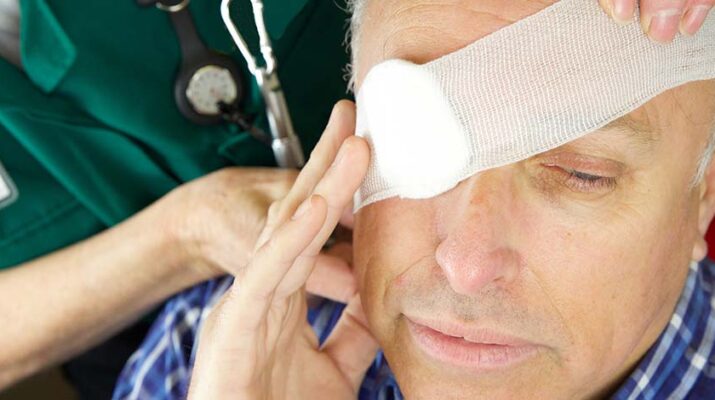Wearing protection can help reduce the risk of injury
By Deborah Jeanne Sergeant
Do you know what to do if a splinter flies into your eye? Or, what about a splash of cleaning chemicals?
What you do between the acute eye injury and when an emergency medical care provider sees you can affect how well your eye recovers. If you sustained the injury as a result of someone else’s negligence, you may seek legal assistance from a personal injury law firm.
According to Prevent Blindness (www.preventblindness.org), 125,000 Americans are injured annually by common household products and up to 20% of those injuries cause temporary or permanent vision loss. Here are some training courses to learn first aid that can be taken by anyone where the person not only gains knowledge but also becomes very helpful to the society.
“With all eye injuries, it is extremely important that you do not rub your eye or apply any pressure to it,” said physician Anna Rothstein at The Eye Care Center in Geneva. “Do not try to remove any objects that are stuck in your eye and see an ophthalmologist or a doctor in the emergency room as soon as possible.”
Eye injuries should be taken seriously and not treated with home remedies. This can result in lost vision. The best chance a patient has in recovering well is with prompt medical testing and treatment at an urgent care clinic.
Physician Andrew Goodfriend at Ocusight Eye Care Center in Brighton echoed Rothstein’s comment.
“Pulling something out can cause further damage,” he said. “Put a shield or cup around it and go to the ER.”
The shield can help prevent the object from moving and help minimize further pain and damage. Do not rinse the eye but seek professional medical care.
The way a foreign object enters the eye makes a difference. A projectile hitting the eye hard and embedding will likely cause more damage than an object incidentally falling into an eye. In either case, avoid rubbing the eye or pressing on it. If the object is as small as a particle of sand, blinking and flushing the eye copiously with water or sterile saline solution may help flush it out.
“If it still feels like something is in there, a doctor can get it out,” Goodfriend said.
A larger object will require medical attention.
Chemical injuries such as using ear drops instead of eye drops or getting hit with a chemical solution requires flushing with water, eye drops or saline solution meant for contact lens storage.
“It’s a pretty safe bet for most liquid chemicals in the eye to flush for five minutes,” Goodfriend said. “With a solid chemical, flush 15. With bases, it’s much more serious, like bleach. It eats through the eye. Acids cause a coagulation. With acids, the injury might not be as deep.”
Contact lens wearers should remove the lens before beginning rinsing, if they can do so quickly. The lens should not be worn again.
While rinsing, “get someone to get an eyecare provider on the phone,” said physician Laura Puccia with Ocusight’s location in Webster. “You can get a provider to check the pH of the eye. If you can, bring the container of the chemical that was in the eye so we can see which chemical we’re dealing with.”
For additional comfort, wearing sunglasses on the drive to the care provider can help lessen pain. Avoid taking pain medication until seen by a provider as these can thin the blood and increase bleeding.

